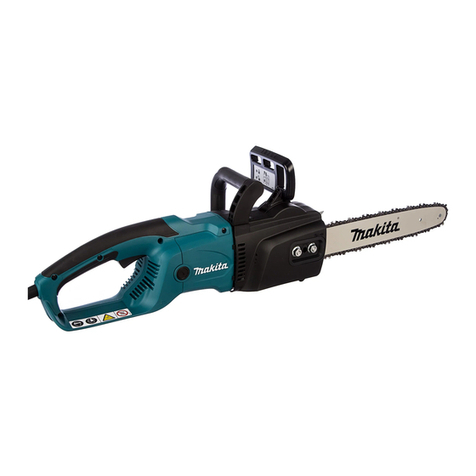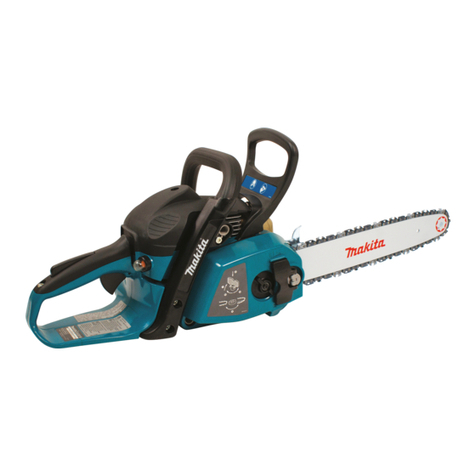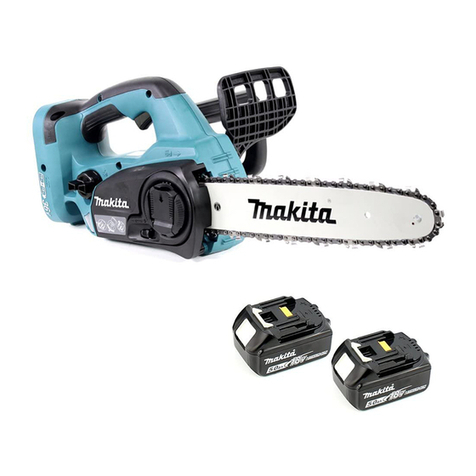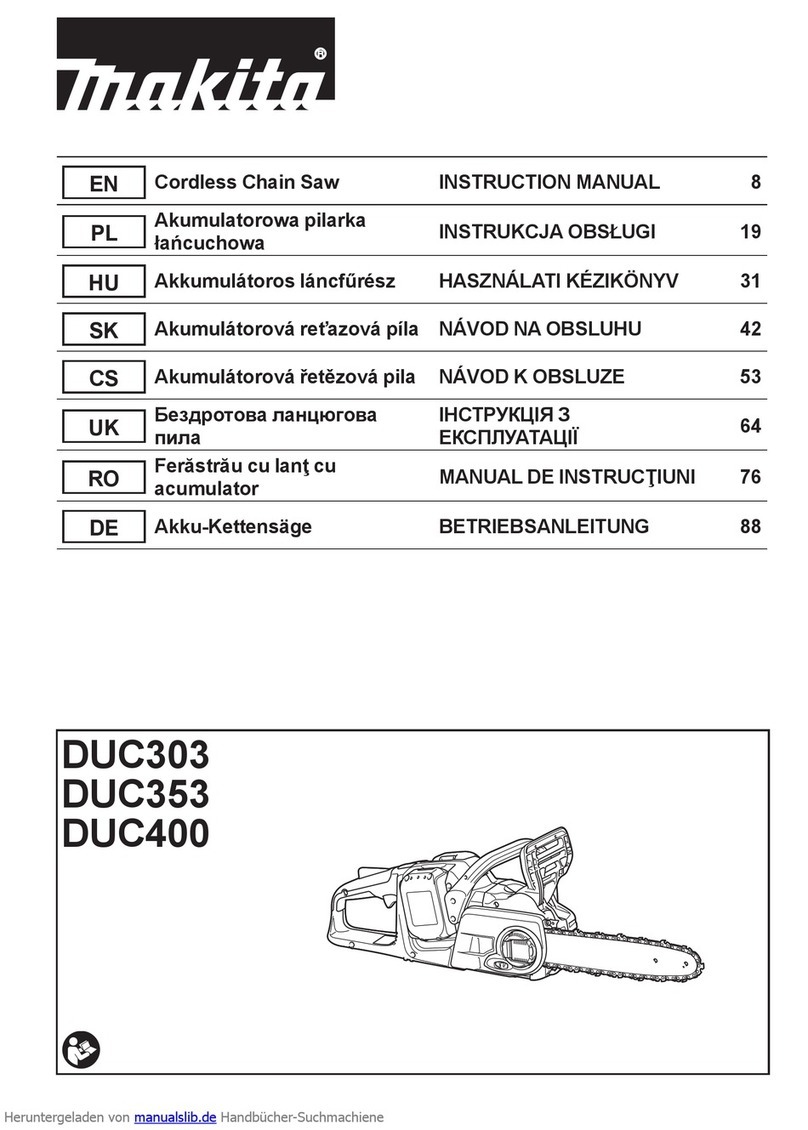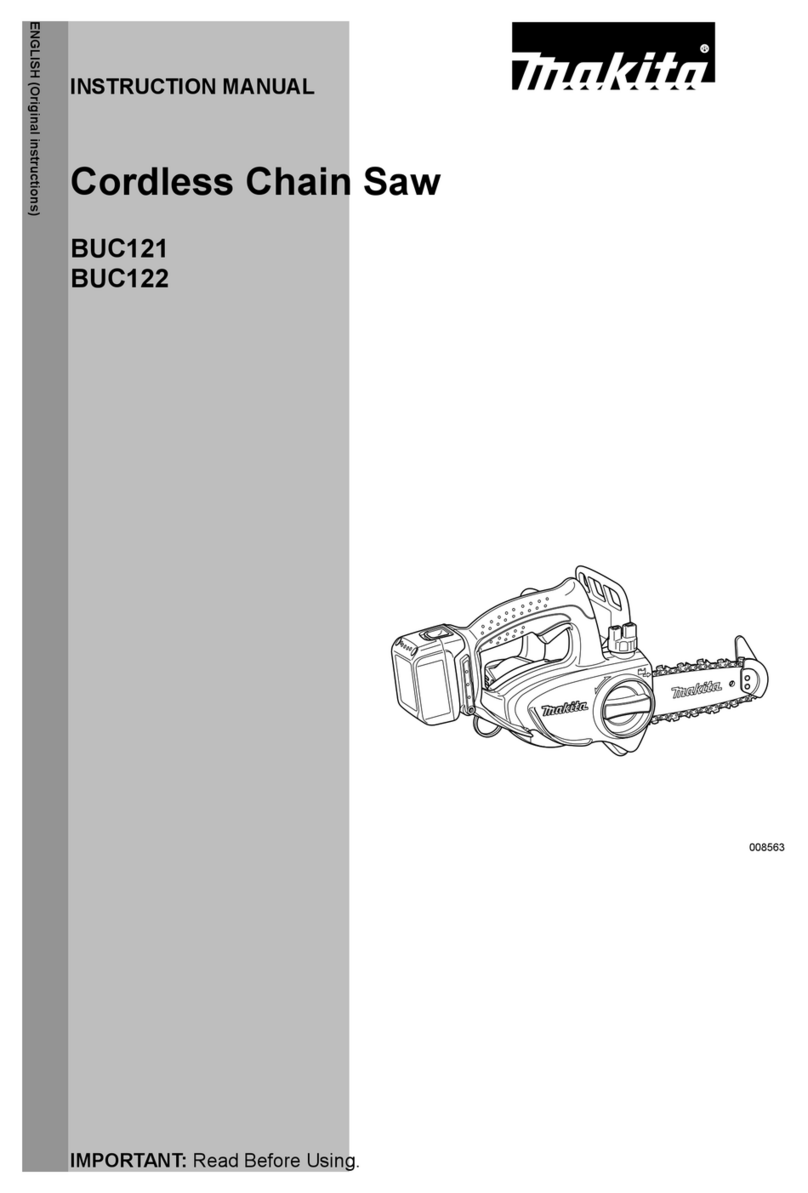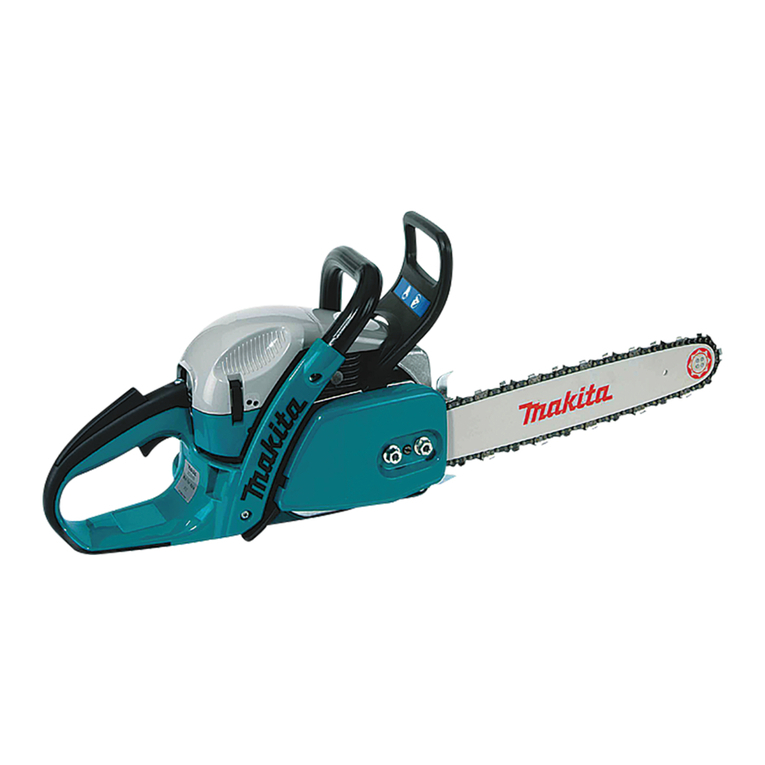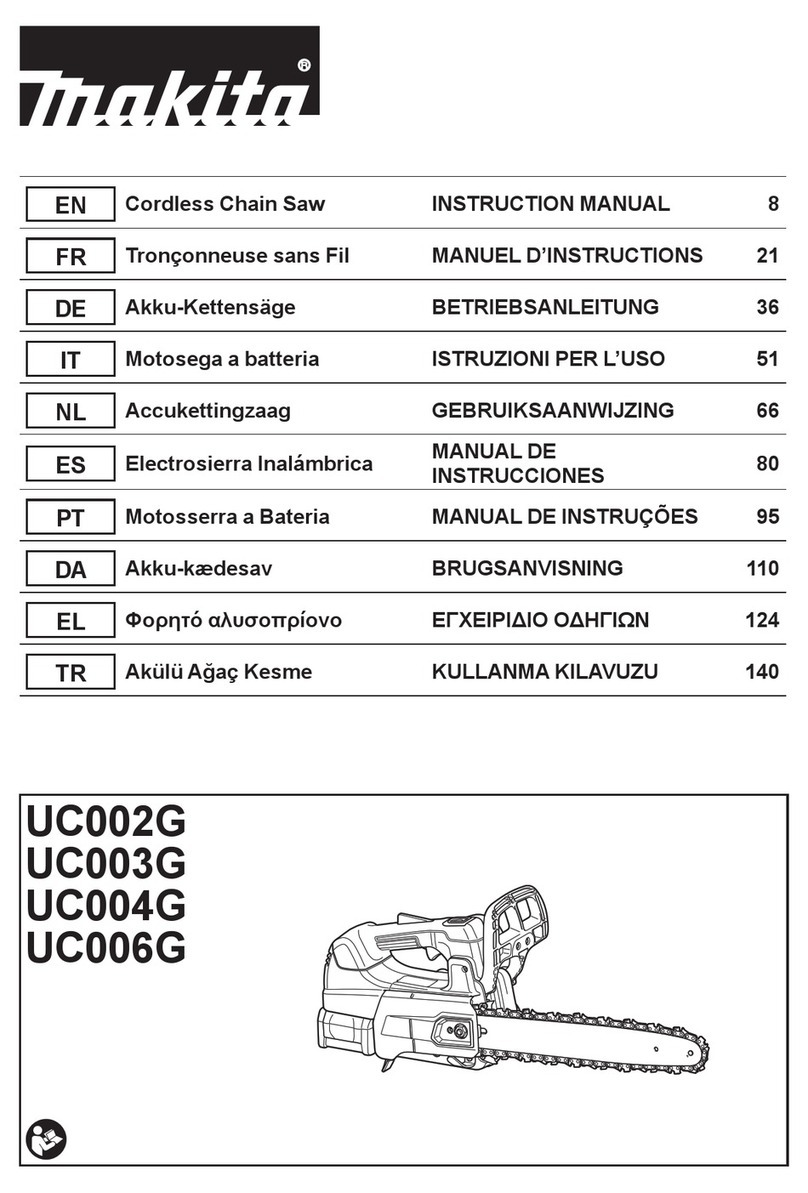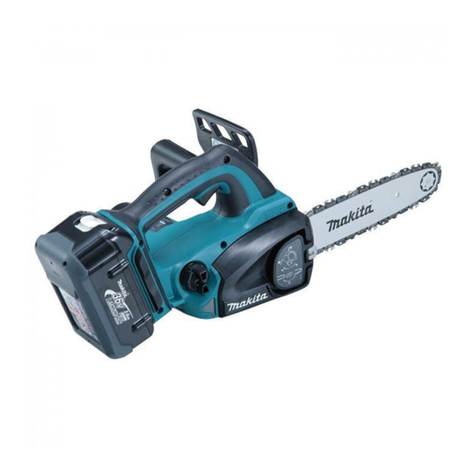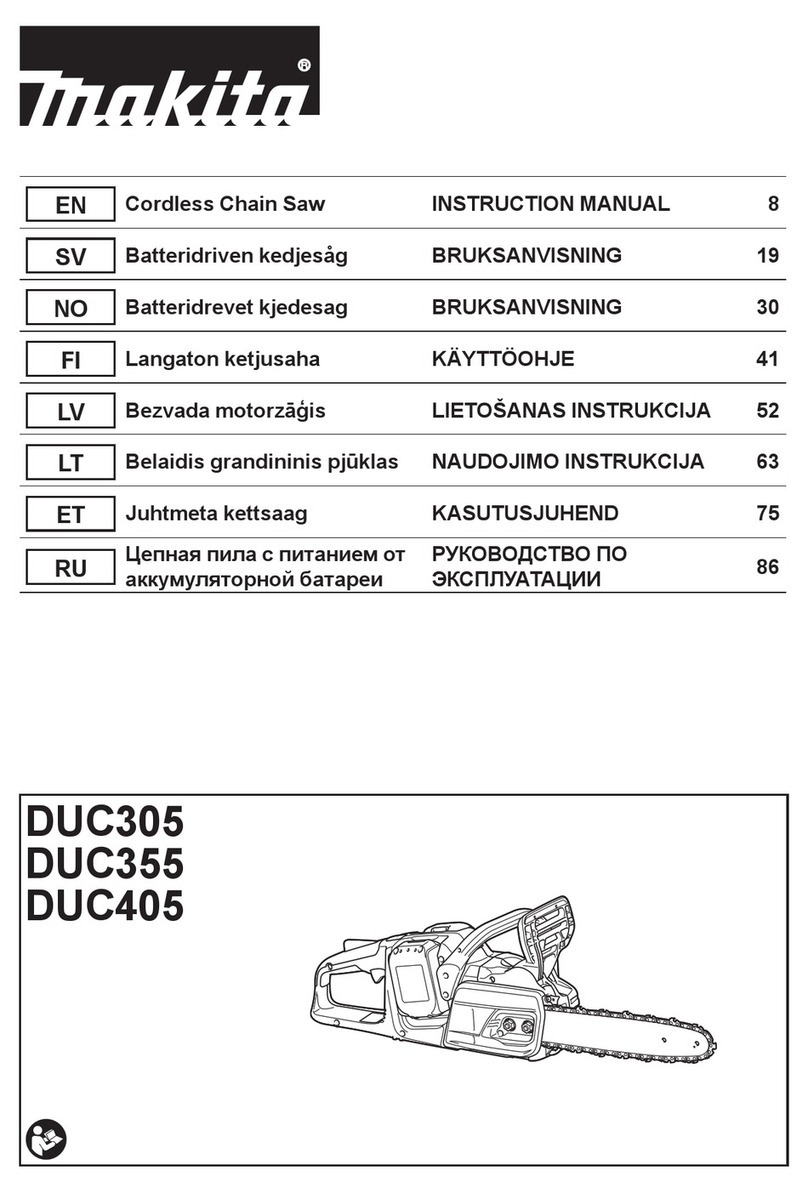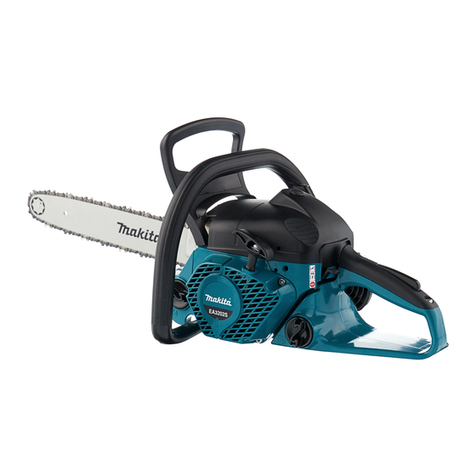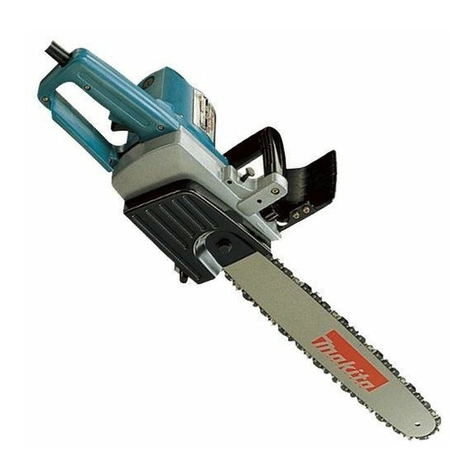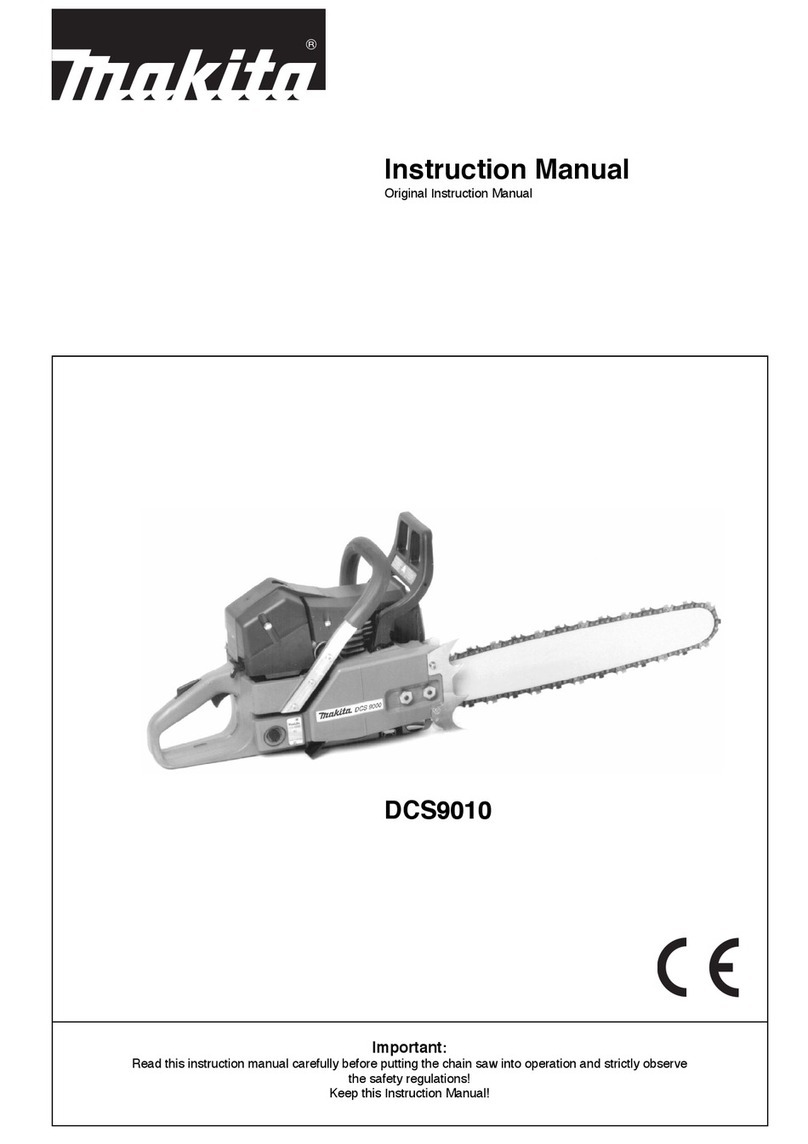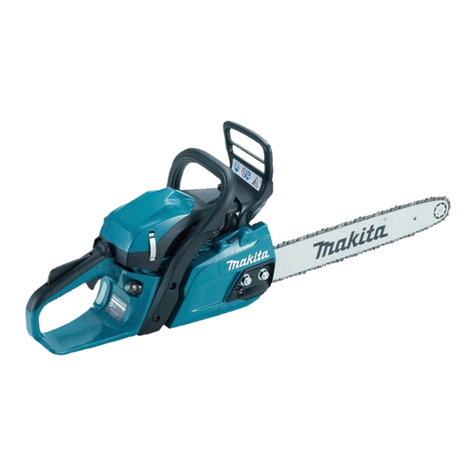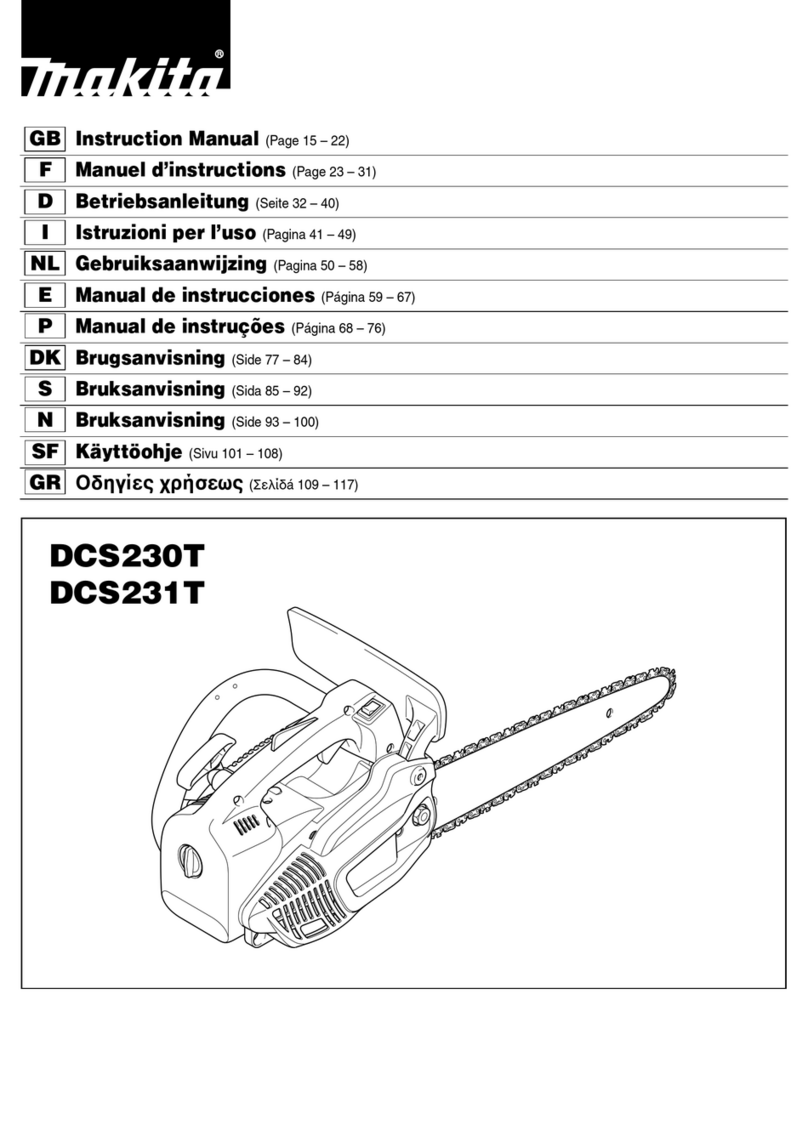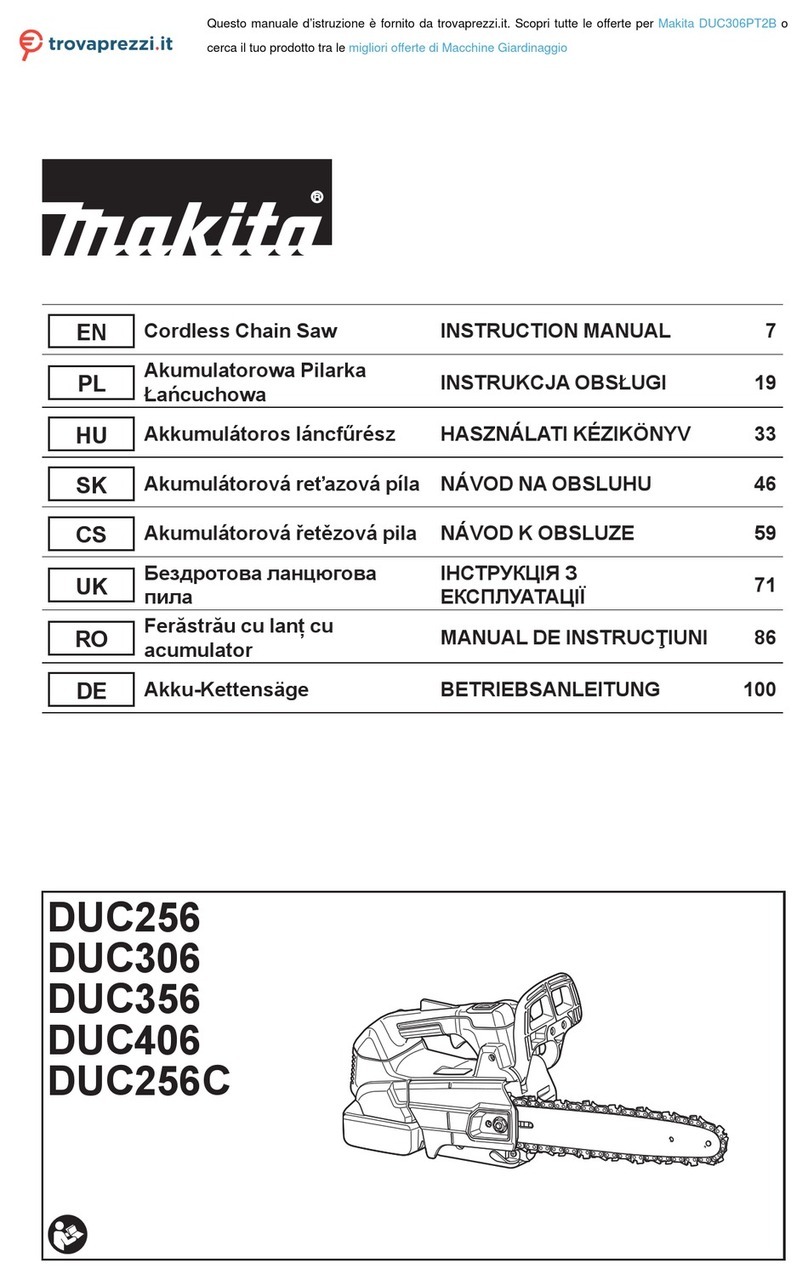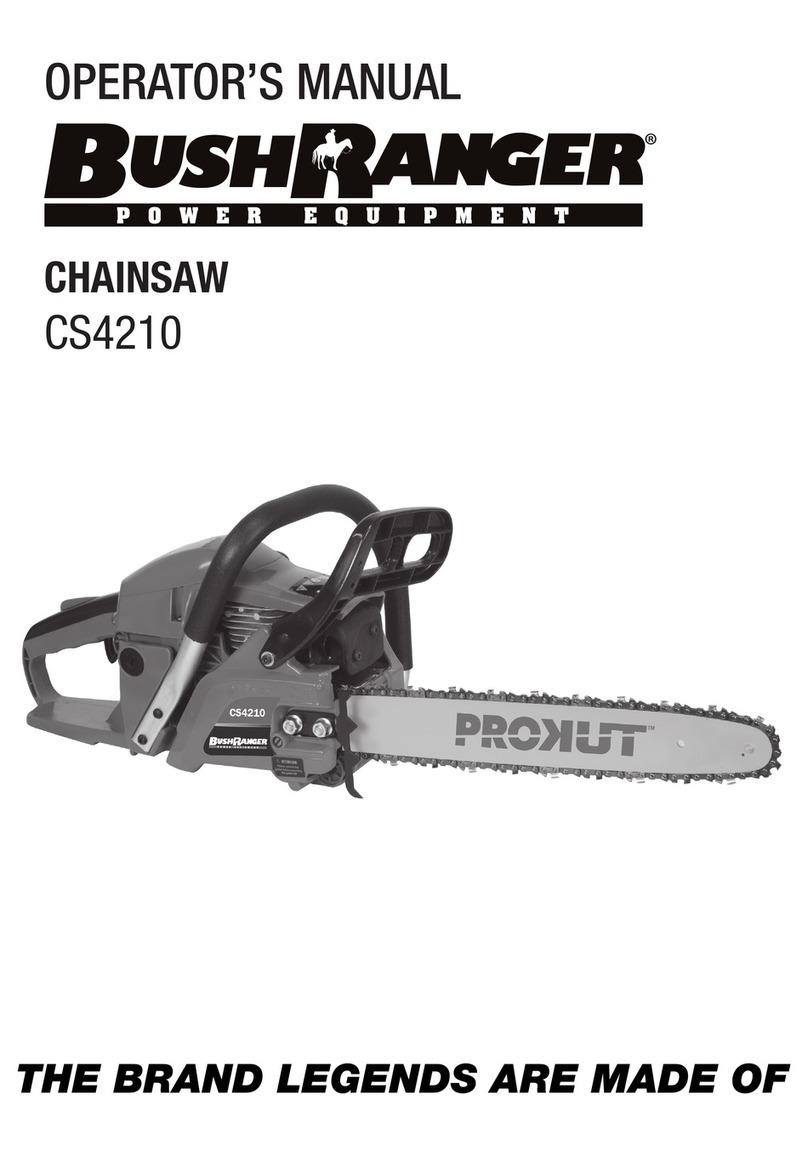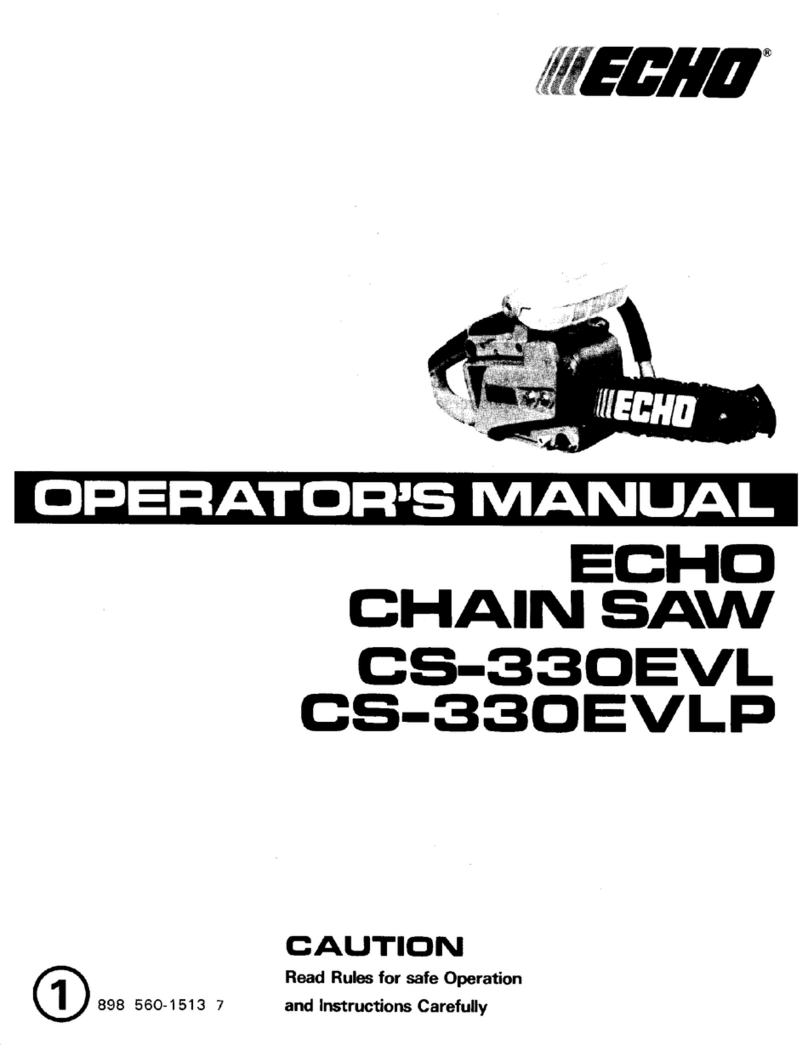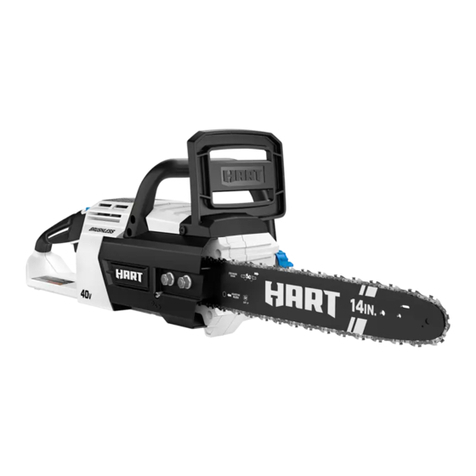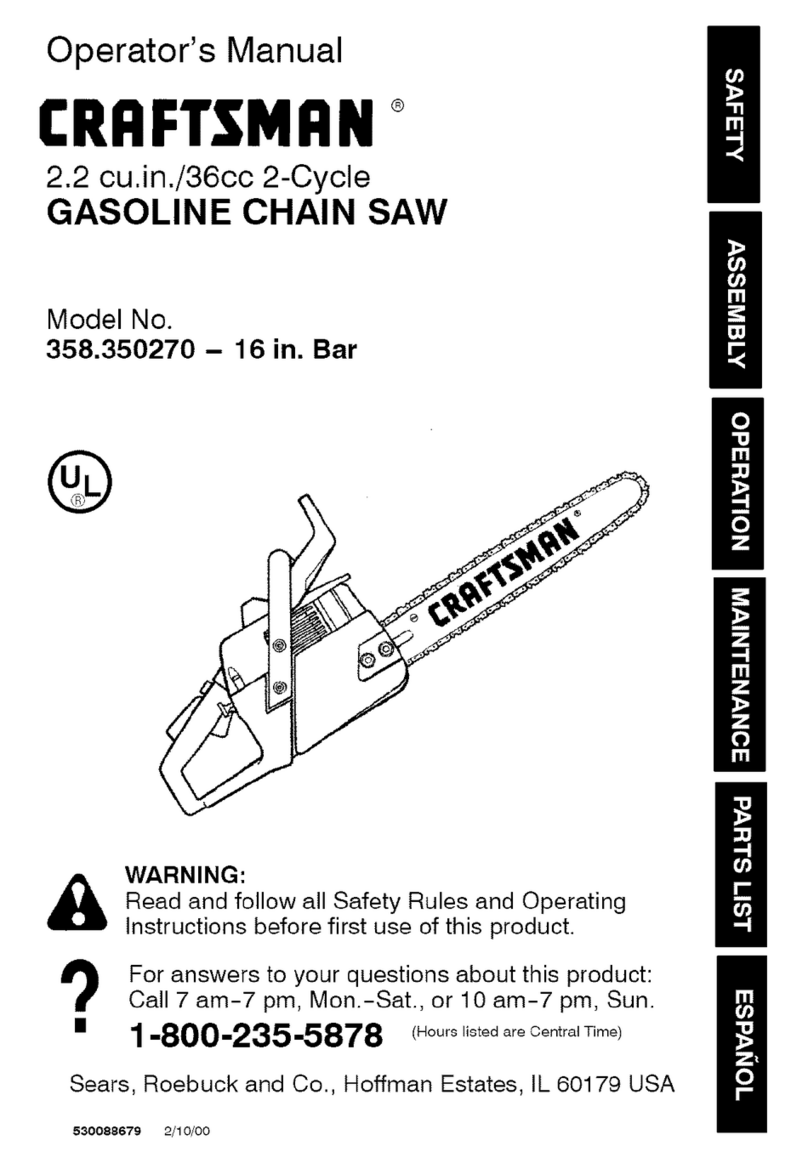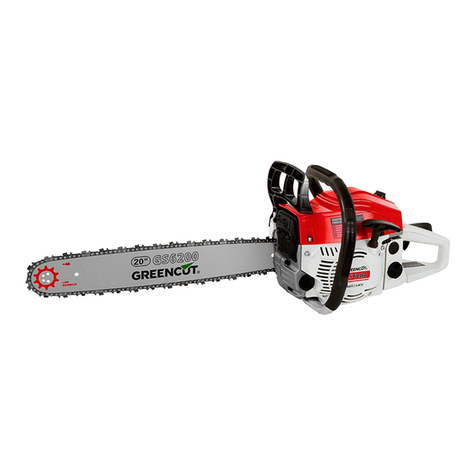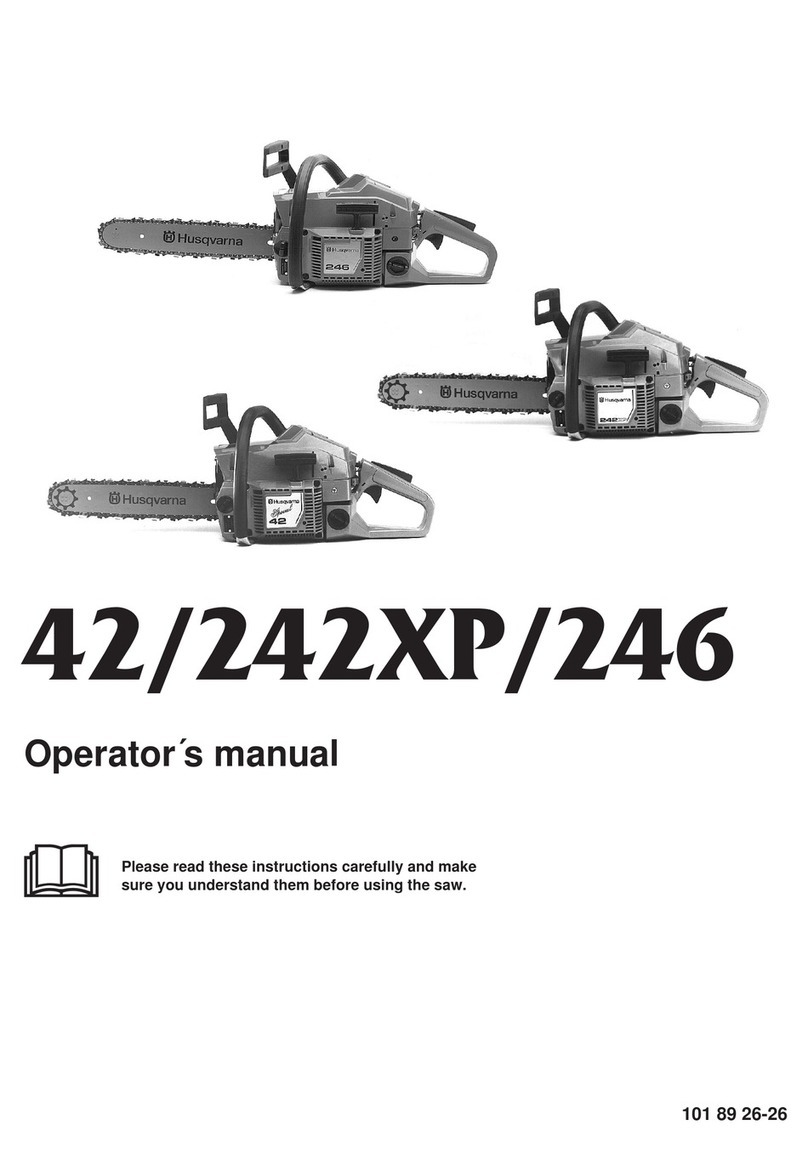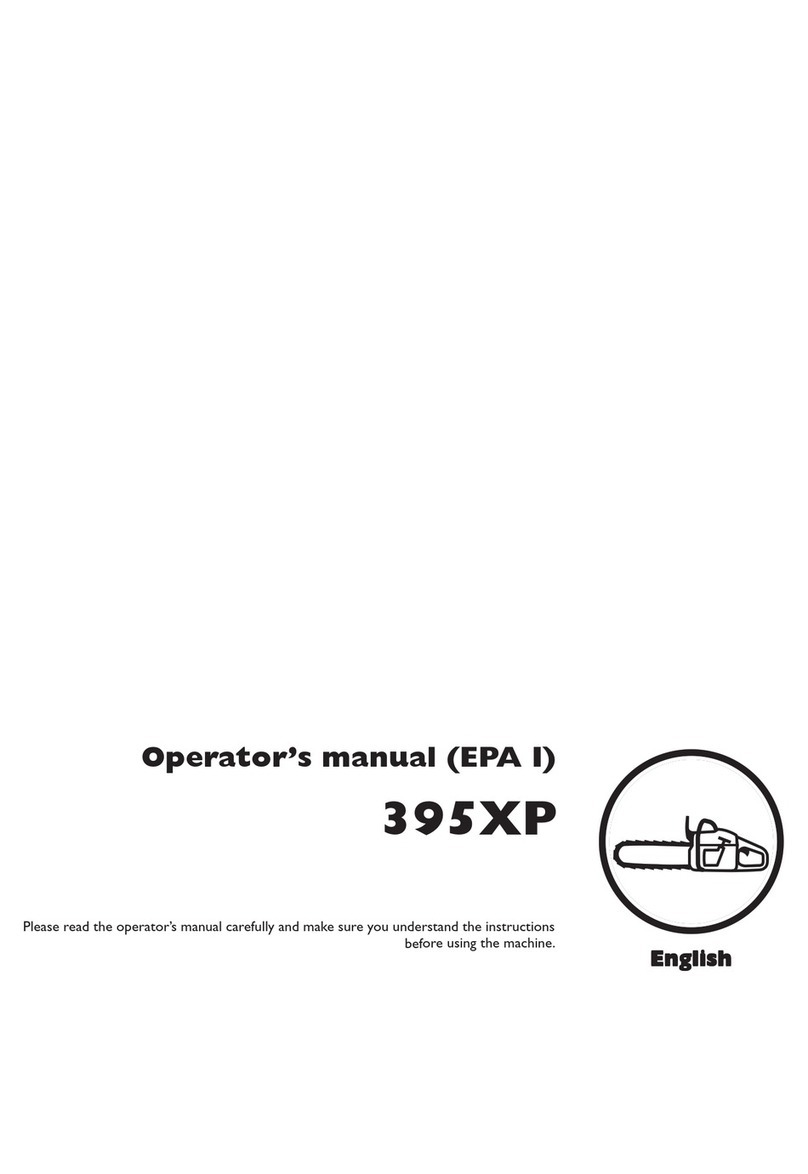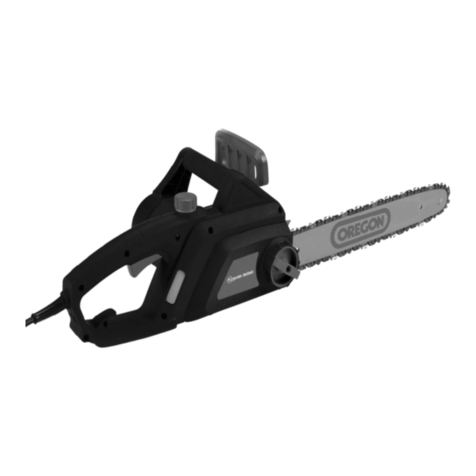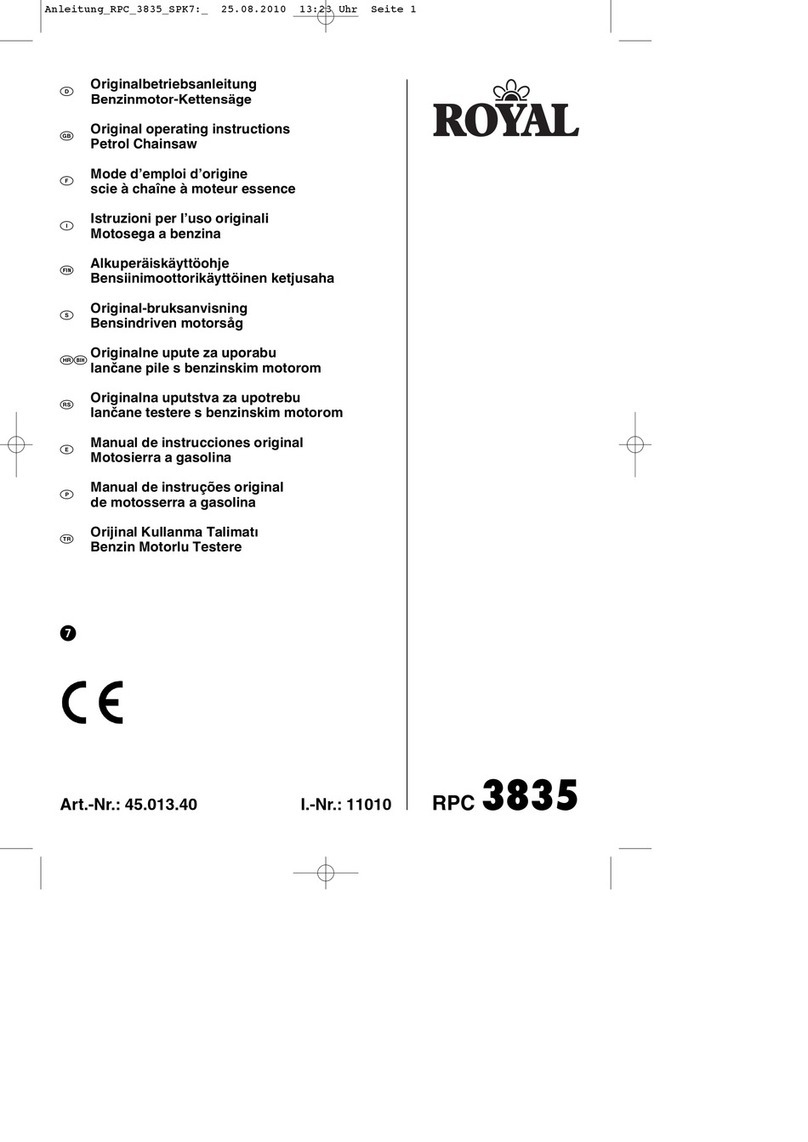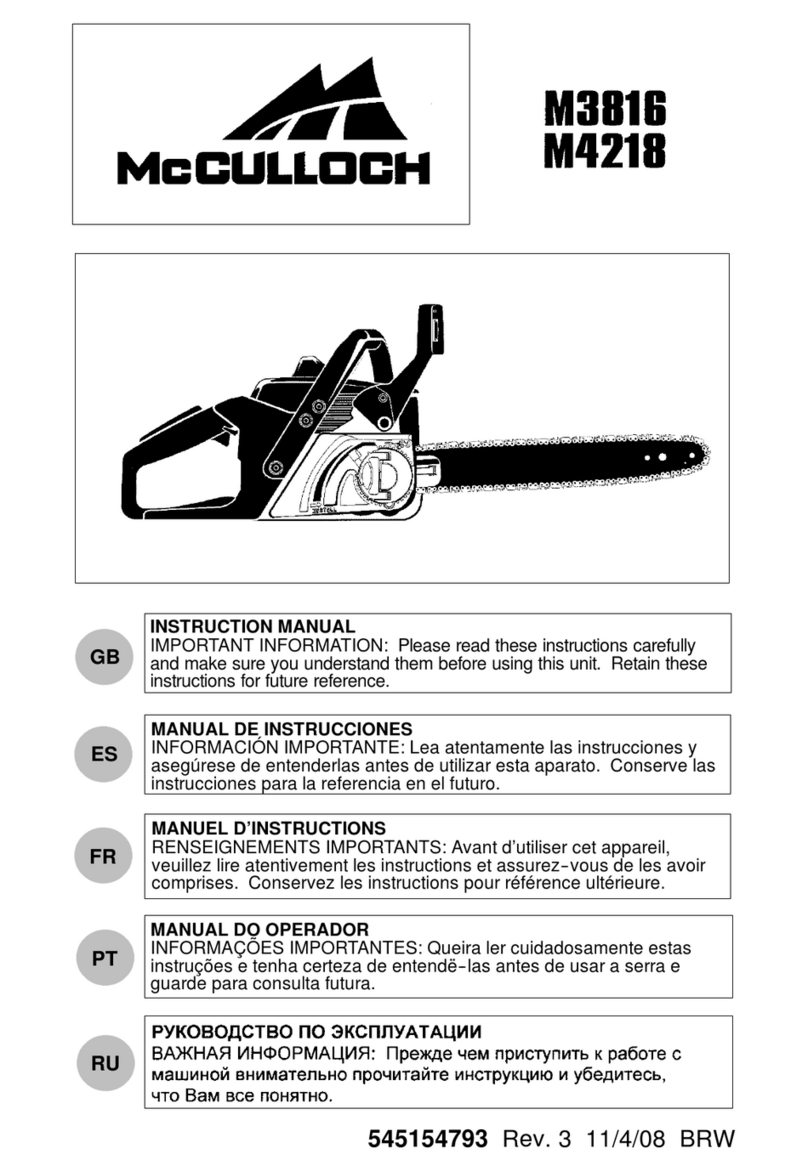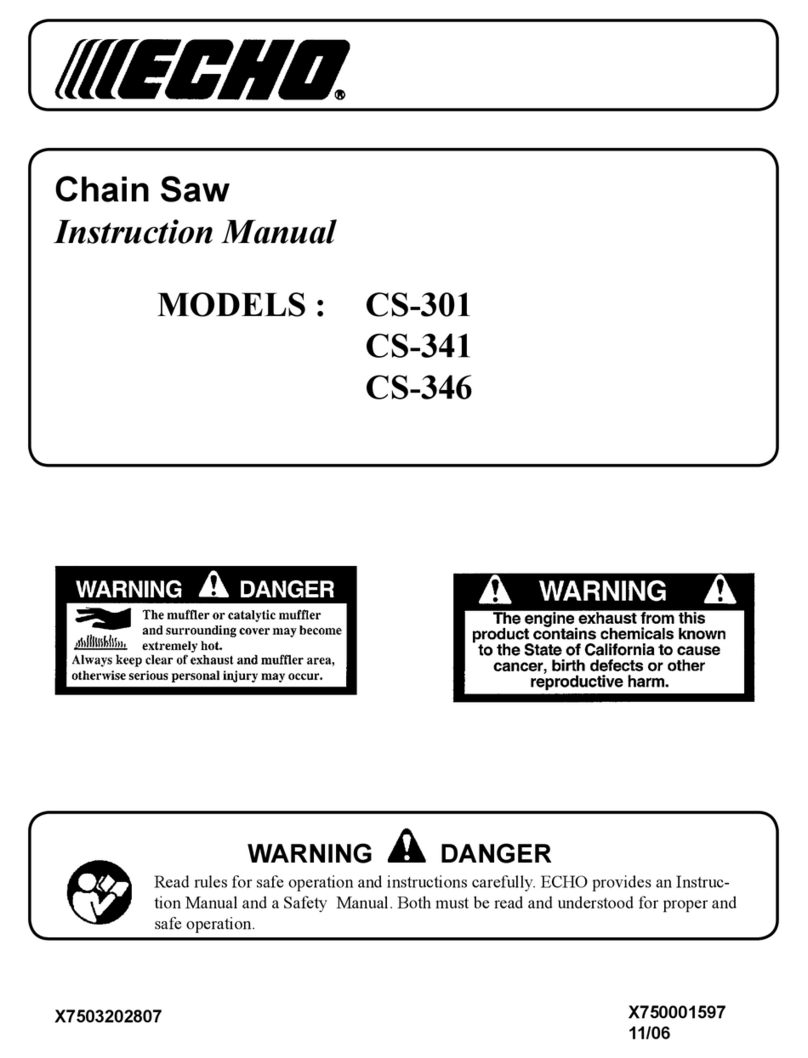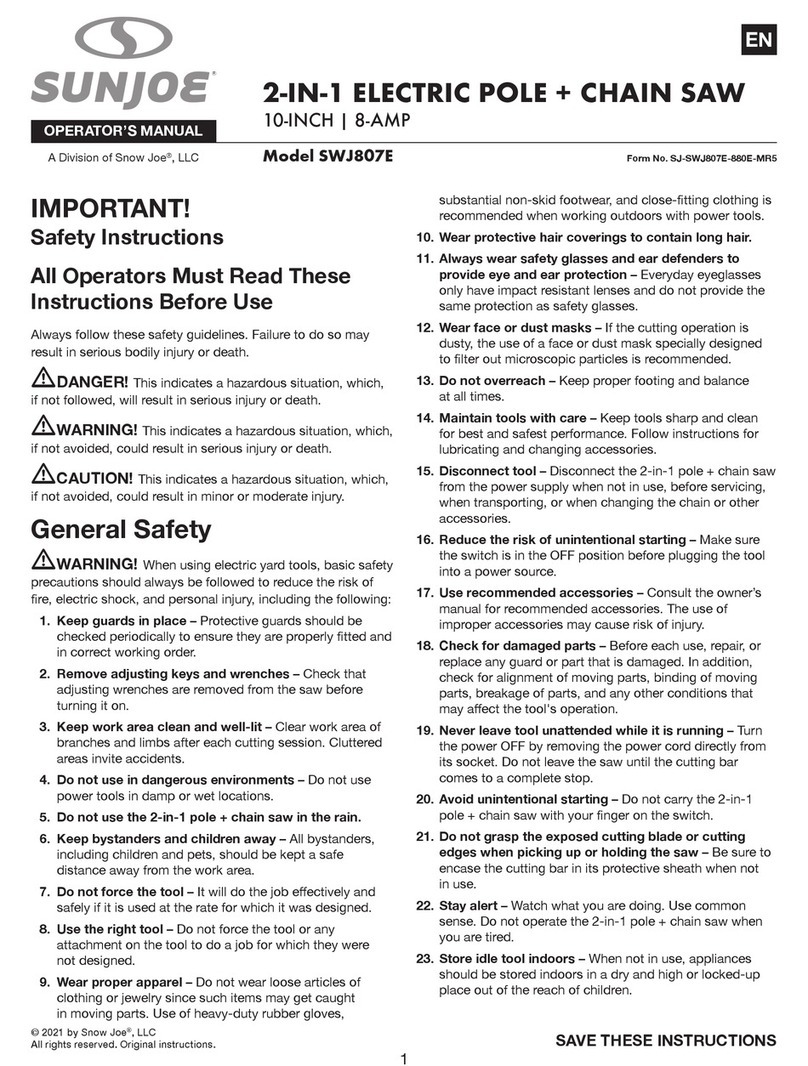
9ENGLISH
For public low-voltage distribution systems of
between 220 V and 250 V.
Switching operations of electric apparatus cause volt-
age uctuations. The operation of this device under
unfavorable mains conditions can have adverse effects
to the operation of other equipment. With a mains
impedance equal or less than 0.29 Ohms it can be pre-
sumed that there will be no negative effects. The mains
socket used for this device must be protected with a
fuse or protective circuit breaker having slow tripping
characteristics.
Noise
The typical A-weighted noise level determined accord-
ing to EN60745:
Sound pressure level (LpA) : 90.3 dB (A)
Sound power level (LWA) : 101.3 dB (A)
Uncertainty (K) : 2.5 dB (A)
Wear ear protection
Vibration
The vibration total value (tri-axial vector sum) deter-
mined according to EN60745:
Work mode : cutting wood
Vibration emission (ah) : 4.7 m/s2
Uncertainty (K) : 1.5 m/s2
NOTE: The declared vibration emission value has
been measured in accordance with the standard test
method and may be used for comparing one tool with
another.
NOTE: The declared vibration emission value
may also be used in a preliminary assessment of
exposure.
WARNING: The vibration emission during actual
use of the power tool can differ from the declared
emission value depending on the ways in which the
tool is used.
WARNING: Be sure to identify safety measures
to protect the operator that are based on an estima-
tion of exposure in the actual conditions of use (taking
account of all parts of the operating cycle such as
the times when the tool is switched off and when it is
running idle in addition to the trigger time).
EC Declaration of Conformity
For European countries only
The EC declaration of conformity is included as Annex A
to this instruction manual.
General Power Tool Safety Warnings
WARNING Read all safety warnings and all
instructions. Failure to follow the warnings and instruc-
tions may result in electric shock, re and/or serious
injury.
Save all warnings and instructions for
future reference.
Chain saw safety warnings
1. Keep all parts of the body away from the saw
chain when the chain saw is operating. Before
you start the chain saw, make sure the saw
chain is not contacting anything. A moment of
inattention while operating chain saws may cause
entanglement of your clothing or body with the
saw chain.
2. Always hold the chain saw with your right
hand on the rear handle and your left hand on
the front handle. Holding the chain saw with a
reversed hand conguration increases the risk of
personal injury and should never be done.
3. Hold the power tool by insulated gripping
surfaces only, because the saw chain may con-
tact hidden wiring or its own cord. Saw chains
contacting a "live" wire may make exposed metal
parts of the power tool "live" and could give the
operator an electric shock.
4. Wear safety glasses and hearing protection.
Further protective equipment for head, hands,
legs and feet is recommended. Adequate pro-
tective clothing will reduce personal injury by ying
debris or accidental contact with the saw chain.
5. Do not operate a chain saw in a tree. Operation
of a chain saw while up in a tree may result in
personal injury.
6. Always keep proper footing and operate the
chain saw only when standing on xed, secure
and level surface. Slippery or unstable surfaces
such as ladders may cause a loss of balance or
control of the chain saw.
7. When cutting a limb that is under tension be
alert for spring back. When the tension in the
wood bres is released the spring loaded limb may
strike the operator and/or throw the chain saw out
of control.
8. Use extreme caution when cutting brush and
saplings. The slender material may catch the saw
chain and be whipped toward you or pull you off
balance.
9. Carry the chain saw by the front handle with
the chain saw switched off and away from your
body. When transporting or storing the chain
saw always t the guide bar cover. Proper
handling of the chain saw will reduce the likelihood
of accidental contact with the moving saw chain.
10. Follow instructions for lubricating, chain ten-
sioning and changing accessories. Improperly
tensioned or lubricated chain may either break or
increase the chance for kickback.
11. Keep handles dry, clean, and free from oil and
grease. Greasy, oily handles are slippery causing
loss of control.
12. Cut wood only. Do not use chain saw for pur-
poses not intended. For example: do not use
chain saw for cutting plastic, masonry or non-
wood building materials. Use of the chain saw
for operations different than intended could result
in a hazardous situation.
13. Causes and operator prevention of kickback:
Kickback may occur when the nose or tip of the
guide bar touches an object, or when the wood
closes in and pinches the saw chain in the cut.

